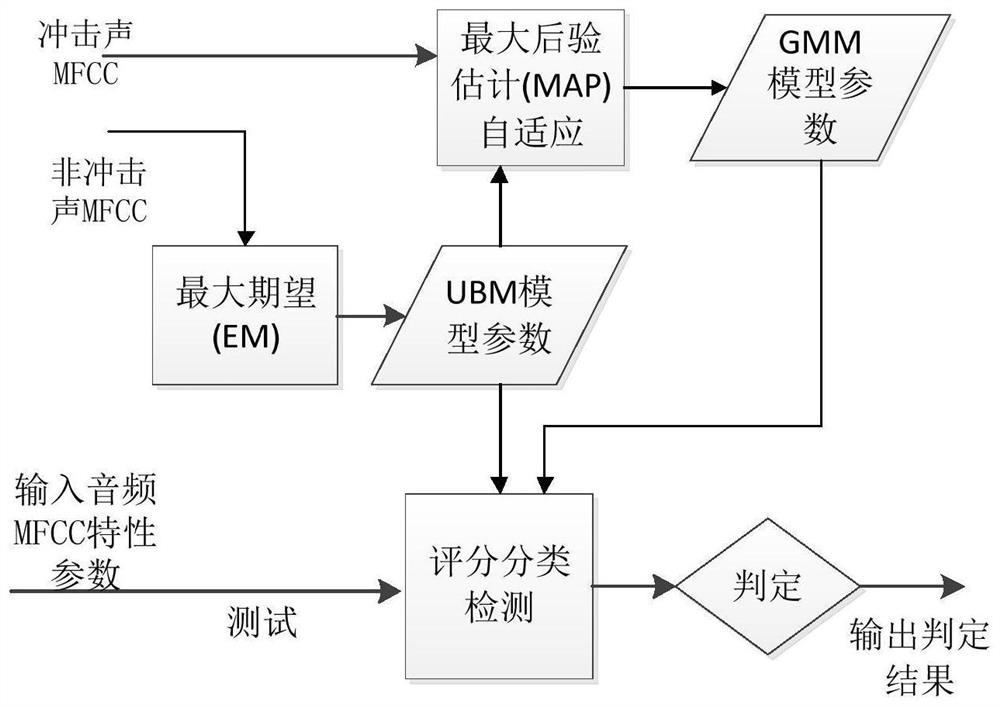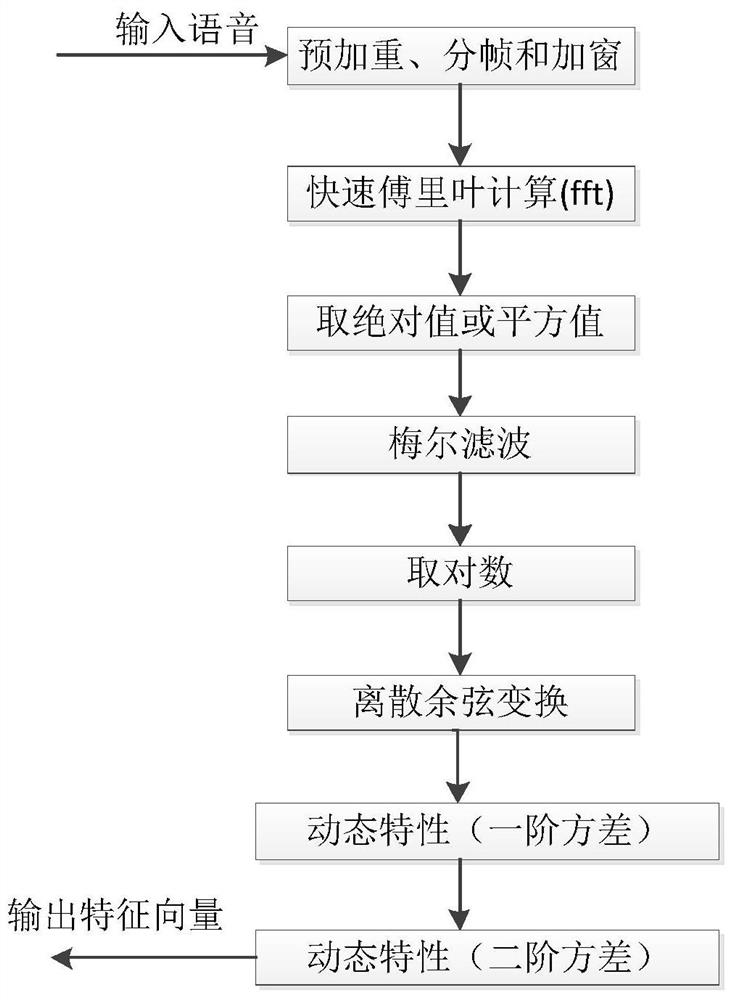GMM-UBM-based impact sound model establishment method and system, and impact sound detection method and system
A GMM-UBM and model building technology, applied in the field of audio signal acquisition and processing, can solve problems such as difficult detection of impact sound
- Summary
- Abstract
- Description
- Claims
- Application Information
AI Technical Summary
Problems solved by technology
Method used
Image
Examples
Embodiment 1
[0050]In this embodiment, a method of establishing an impact acoustic model based on GMM-UBM includes the following steps:
[0051]Step 1: Get the non-impact sound signal sample dataset, calculate the MFCC parameter of each non-impact sound signal to obtain an MFCC feature vector of the non-impact sound signal;
[0052]Step 2: Establish a UBM model according to the MFCC feature vector of the non-rinc-resistant sound signal, use the maximum desired algorithm to train UBM models, obtain the training of UBM models and training good model parameters, will train the UBM model as a background sound model;
[0053]Step 3: Get the impact sound signal sample data set, calculate the MFCC parameter of each impact sound signal to obtain the MFCC feature vector of the impact sound signal;
[0054]Step 4: Establish a GMM model based on the MFCC feature vector of the impact sound signal, and the model parameters of step 2 training are passed to the GMM model through the maximum sub-test estimation method, obt...
Embodiment 2
[0094]In this embodiment, an impact acoustic model established system based on GMM-UBM, including sample acquisition modules, model establishment modules, training modules, and parameter transfer modules;
[0095]The sample acquisition module is used to obtain non-impact sound signal sample data sets and impact sound signal sample data sets;
[0096]The model establishment module is used to calculate the MFCC parameter of each non-impact sound signal, obtain the MFCC feature vector of the non-impact sound signal, and is also used to calculate the MFCC parameter of each impact sound signal to obtain an MFCC feature vector of the impact sound signal. The UBM model is established according to the MFCC feature vector of the non-rincphone signal, and the GMM model is established according to the MFCC feature vector of the impact sound signal;
[0097]The training module is used to train UBM models using the maximum desired algorithm to obtain a well-trained UBM model and a well-trained model para...
Embodiment 3
[0108]Such asfigure 1 As shown, this embodiment provides an impact sound model establishment method, including:
[0109]Step 110: Get the audio signal sample picked up by the microphone; divide the sample into two categories, a type of audio sample signal of the non-shock sound, a type of audio sample signal of the impact;
[0110]Step 120: UBM sample training, the non-impact sound audio sample signal as a sample of UBM training, such asimage 3 Indicated;
[0111]Feature extraction of all audio samples of UBM training, such asfigure 2 As shown, the feature extraction includes: pre-weight, divided fraction window, Fourier transform to obtain a spectrogram, then perform MEL filter to make the spectrum map more compact, finally perform a fallback analysis (tubular number and discrete cosine transformation) and differentials (Provide a dynamic feature) Get 42-dimensional MFCC feature vectors;
[0112]Calculate the parameter set of Gaussian mixed model {λ1, ..., λ1, ..., λM}, Λi= (Ωiμi, Σi), i ∈ [1,...
PUM
 Login to View More
Login to View More Abstract
Description
Claims
Application Information
 Login to View More
Login to View More - R&D
- Intellectual Property
- Life Sciences
- Materials
- Tech Scout
- Unparalleled Data Quality
- Higher Quality Content
- 60% Fewer Hallucinations
Browse by: Latest US Patents, China's latest patents, Technical Efficacy Thesaurus, Application Domain, Technology Topic, Popular Technical Reports.
© 2025 PatSnap. All rights reserved.Legal|Privacy policy|Modern Slavery Act Transparency Statement|Sitemap|About US| Contact US: help@patsnap.com



